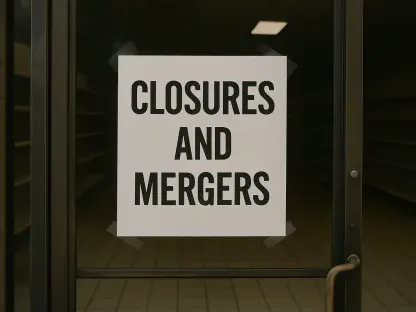Setting the Stage: A Growing Crisis in Skilled Trades
Imagine a construction site stalled due to a lack of electricians, or a manufacturing plant unable to meet demand because welders are nowhere to be found. This is not a hypothetical scenario but a stark reality in today’s labor market, where skilled trades face unprecedented shortages, and despite high demand and competitive wages, Generation Z (Gen Z), the cohort born between 1997 and 2012, remains largely disinterested in these careers. This market analysis dives into the disconnect between industry needs and Gen Z’s perceptions, exploring current trends, data-driven insights, and future projections. Understanding this gap is crucial for employers, educators, and policymakers aiming to address labor shortages and ensure economic stability in key sectors.
Market Dynamics: Trends Shaping Skilled Trades and Gen Z Attitudes
Demand Surge Amidst Labor Shortages
The skilled trades sector is experiencing a significant imbalance between supply and demand. Industries such as construction, plumbing, and HVAC report critical shortages, with some estimates suggesting a deficit of over 500,000 workers in the United States alone. This gap has driven up wages, with entry-level positions often starting above $50,000 annually, outpacing many traditional white-collar roles at similar career stages. Yet, the influx of new talent remains insufficient, creating bottlenecks that delay projects and inflate costs across multiple sectors. This trend underscores an urgent need for fresh strategies to attract younger workers into these high-demand fields.
Gen Z’s Perception Barrier: Data Insights
Recent survey data paints a troubling picture of Gen Z’s outlook on skilled trades. Only 38% of this demographic, now aged between 13 and 28, view these careers as offering the best opportunities, while a mere 36% recognize them as a faster, more affordable path compared to a four-year degree. This perception stands in stark contrast to older generations, such as baby boomers, where nearly half acknowledge the cost-effectiveness and earning potential of trades. The data suggests a cultural and informational divide, where younger workers prioritize prestige over practicality, often overlooking the financial stability and minimal debt associated with trade training programs.
Shifting Employer Strategies in Response
Employers are adapting to these shortages by rethinking hiring practices and de-emphasizing the necessity of college degrees. Many companies now prioritize practical skills over formal education, offering apprenticeships and on-the-job training to fill immediate needs. However, attracting Gen Z remains a challenge due to entrenched misconceptions about the nature of trade work. Businesses are beginning to invest in outreach campaigns that highlight job security, competitive pay, and opportunities for entrepreneurship, aiming to reframe these roles as viable long-term careers. This shift in strategy reflects a broader market trend toward valuing competency over credentials in addressing labor gaps.
Future Projections: Opportunities and Challenges Ahead
Technological Integration as a Game-Changer
Looking toward the next few years, from 2025 to 2027, the integration of technology into skilled trades could reshape the market landscape. Innovations like smart tools, automation, and digital diagnostics are modernizing traditional roles, potentially making them more appealing to a tech-savvy generation like Gen Z. For instance, electricians now often work with advanced software to design systems, while plumbers use cutting-edge equipment for diagnostics. This trend may help dispel outdated notions of trades as purely manual labor, positioning them as hybrid careers that blend hands-on skills with digital expertise. If marketed effectively, this evolution could draw more young talent into the sector.
Economic Pressures Driving Change
Economic factors are also poised to influence future market dynamics. With rising college debt levels—often exceeding $30,000 for a bachelor’s degree—more young adults may turn to trade programs as a cost-effective alternative. Training for skilled trades typically costs a fraction of a university education and can be completed in under two years, offering a quicker return on investment. As economic pressures mount, projections suggest a gradual shift in Gen Z’s career considerations, especially if awareness campaigns highlight success stories of tradespeople earning six-figure incomes without the burden of student loans.
Policy and Educational Reforms on the Horizon
Another critical factor in future projections is the role of policy and educational reform. Public-private partnerships are gaining traction, with governments and industries collaborating to fund vocational programs and expand access to trade education in high schools. These initiatives aim to introduce skilled trades earlier in the academic journey, countering the bias toward college-bound paths. If sustained through 2025 and beyond, such reforms could significantly increase the talent pipeline, though success will depend on overcoming cultural stigmas and ensuring programs align with industry needs. The market may see a slow but steady rise in Gen Z participation if these efforts gain momentum.
Reflecting on the Analysis: Strategic Pathways Forward
Looking back on this market analysis, the disconnect between Gen Z’s perceptions and the realities of skilled trades stands as a central barrier to addressing labor shortages. The data revealed a generational divide, with younger workers often undervaluing careers that offer substantial financial and professional benefits. Trends like technological integration and economic pressures hinted at potential shifts, while employer adaptations and policy reforms laid the groundwork for change. The implications are clear: without targeted intervention, industries risk prolonged disruptions due to insufficient skilled labor.
Moving forward, strategic action is imperative. Employers need to invest in rebranding efforts, showcasing trades as modern, rewarding careers through social media campaigns and mentorship programs. Educators and policymakers must prioritize early exposure by embedding trade education into curricula and supporting accessible training initiatives. For Gen Z, exploring apprenticeships or career fairs offers a practical way to gain insight into these fields. These steps, if implemented thoughtfully, promise to align market needs with workforce potential, ensuring a robust future for skilled trades.









